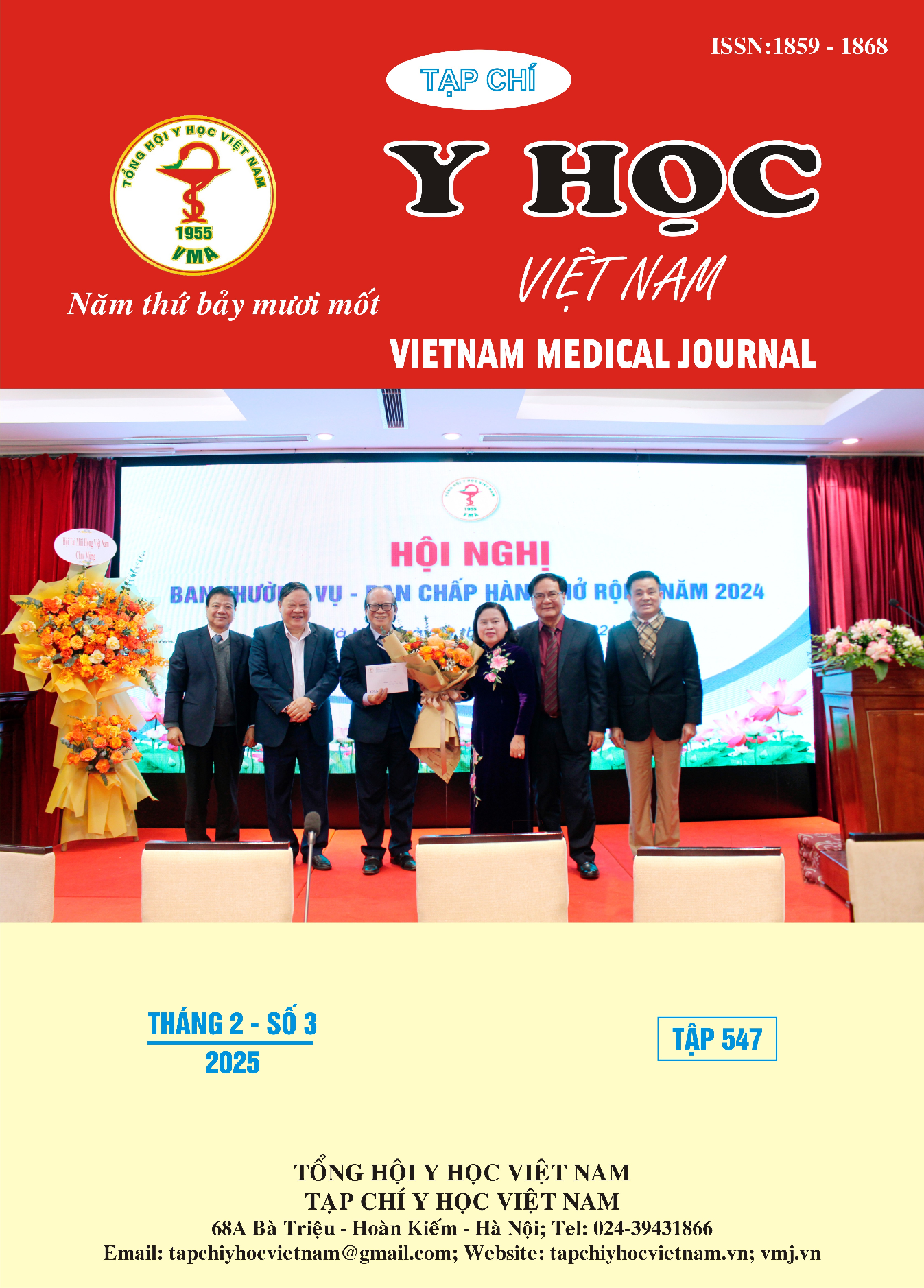CLINICAL CHARACTERISTICS AND 30-DAY READMISSION RATE OF ACUTE HEART FAILURE PATIENTS AT NGUYEN TRI PHUONG HOSPITAL
Main Article Content
Abstract
Introduction: Acute heart failure (AHF) carries a high risk of readmission, significantly increasing the costs associated with care and treatment. With advancements in contemporary heart failure management, the clinical and paraclinical characteristics, as well as readmission rates, may differ substantially from previous trends. Therefore, describing these characteristics and determining the 30-day readmission rate is essential to provide an updated and accurate perspective on the disease's current state. Objective: To identify the clinical and paraclinical characteristics and the 30-day readmission rate of patients with acute heart failure. Subjects and Methods: A cross-sectional descriptive study was conducted on 120 patients diagnosed with acute heart failure between February 2024 and August 2024 at the Cardiology Department of Nguyen Tri Phuong Hospital. Clinical and paraclinical characteristics and readmission information were collected from medical records and telephone interviews. Results: From February 2024 to August 2024, 120 patients participated in the study with a mean age of 67.1 ± 13.8 years, and 53.3% were male. The three most common causes of heart failure were coronary artery disease (57.5%), valvular heart disease (18.3%), and cardiomyopathy (16.7%). The most prevalent precipitating factor was infection (28.3%). The three most common comorbidities and cardiovascular risk factors were dyslipidemia (75.8%), ischemic heart disease (63.3%), and hypertension (52.5%). Among the patients, 31.7% were newly diagnosed with acute heart failure. The median ejection fraction was 37.1%. Over half of the patients had heart failure with reduced ejection fraction (HFrEF). At discharge, the prescription rates for evidence-based HFrEF therapies were as follows: RAAS inhibitors (92.7%), aldosterone antagonists (89.7%), SGLT2 inhibitors (85.3%), and beta-blockers (60.3%). The 30-day readmission rate for the study population was 20.8%. Conclusion: Coronary artery disease was the most common cause of heart failure, while infection was the most frequent precipitating factor for acute heart failure. Despite advancements in heart failure treatment and active management, the 30-day readmission rate post-discharge remained high at 20.8%.
Article Details
Keywords
Acute heart failure, clinical characteristics, paraclinical characteristics, readmission
References
2. Niên giám thống kê y tế 2019 - 2020 (2020).
3. Nguyễn Đức Khánh, Trương Phi Hùng. Đặc điểm lâm sàng, cận lâm sàng bệnh nhân suy tim cấp nhập viện tại bệnh viện Chợ Rẫy. Tạp chí Y học Việt Nam. 09/12 2024;542(1)
4. Triệu Khánh Vinh, Hoàng Văn Sỹ. Các yếu tố tiên lượng tử vong hoặc tái nhập viện trong vòng 30 ngày sau xuất viện trên bệnh nhân suy tim. Tạp chí Y học Việt Nam. 2022;520(1B)
5. Zhang Y, Xiang, T, Wang, Y. et al. Explainable machine learning for predicting 30-day readmission in acute heart failure patients. iScience. Jul 19 2024;27(7):110281. doi:10.1016/ j.isci.2024.110281
6. Ide T. KH, Matsushima S., et al. Clinical Characteristics and Outcomes of Hospitalized Patients With Heart Failure From the Large-Scale Japanese Registry Of Acute Decompensated Heart Failure (JROADHF). Circulation journal: official journal of the Japanese Circulation Society. Aug 25 2021;85(9):1438-1450. doi:10.1253/circj.CJ-20-0947
7. Verdu-Rotellar J. M. V-RH, Abellana R., et al. Precipitating factors of heart failure decompensation, short-term morbidity and mortality in patients attended in primary care. Scandinavian journal of primary health care. Dec 2020; 38(4): 473-480. doi:10.1080/02813432. 2020.1844387
8. Nguyễn Quang Trung, Nguyễn Hoàng Anh. Đặc điểm và kết cục ngắn hạn của người bệnh nhập viện vì suy tim mất bù cấp tại bệnh viện Nhân dân Gia Định. Tạp chí Y học Việt Nam. 09/30 2024; 542(3)
9. McCabe N, Butler J., Dunbar S. B., et al. Six-minute walk distance predicts 30-day readmission after acute heart failure hospitalization. Heart & lung: the journal of critical care. Jul-Aug 2017; 46(4):287-292. doi:10.1016/j.hrtlng.2017.04.001
10. Vader J. M. LSJ, Stevens S. R., et al. Timing and Causes of Readmission After Acute Heart Failure Hospitalization-Insights From the Heart Failure Network Trials. Journal of cardiac failure. Nov 2016;22(11):875-883. doi:10.1016/j.cardfail. 2016.04.014


